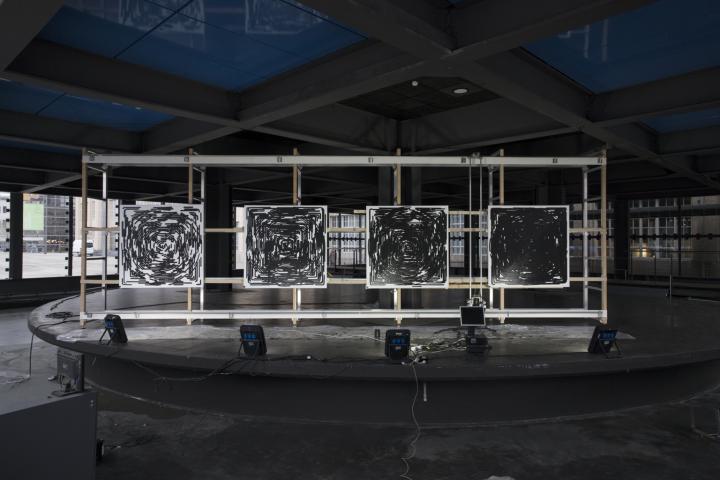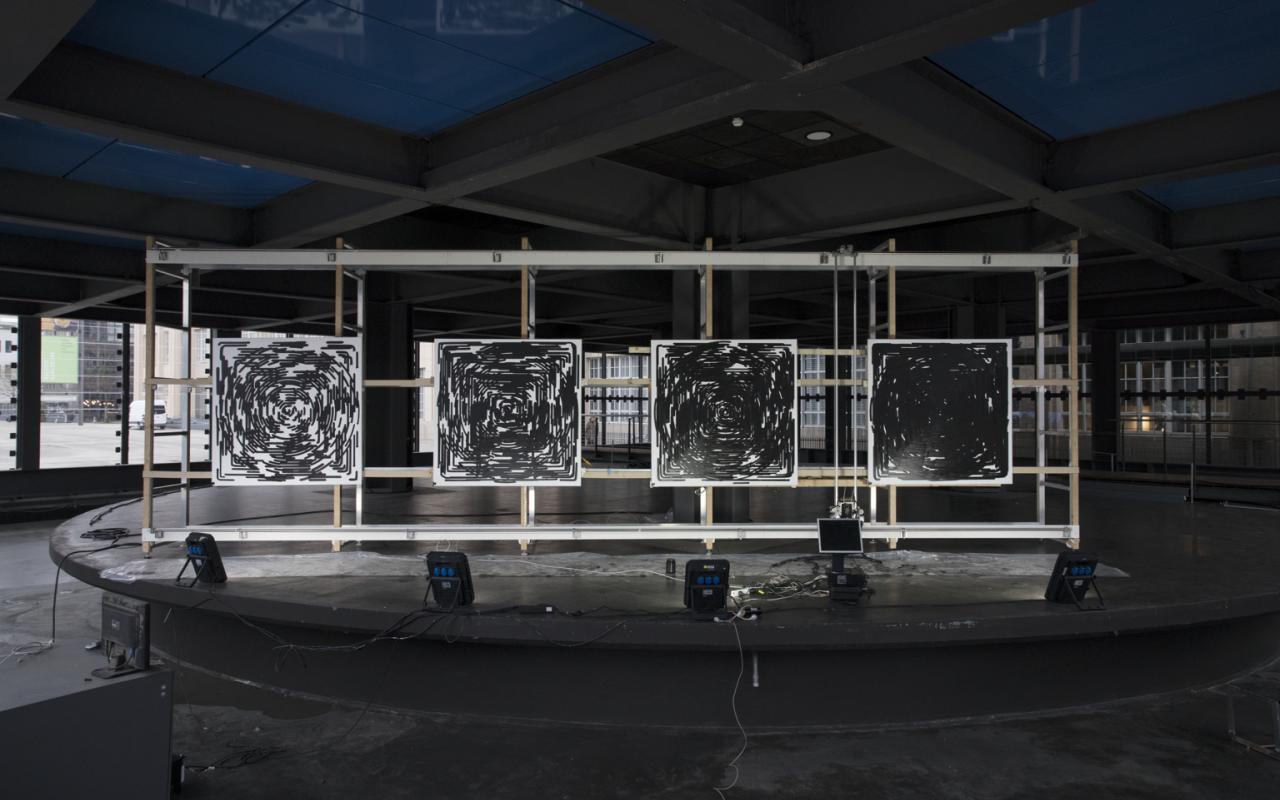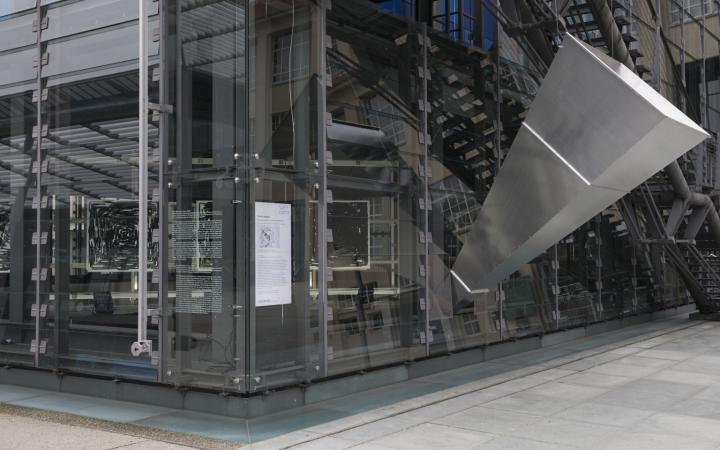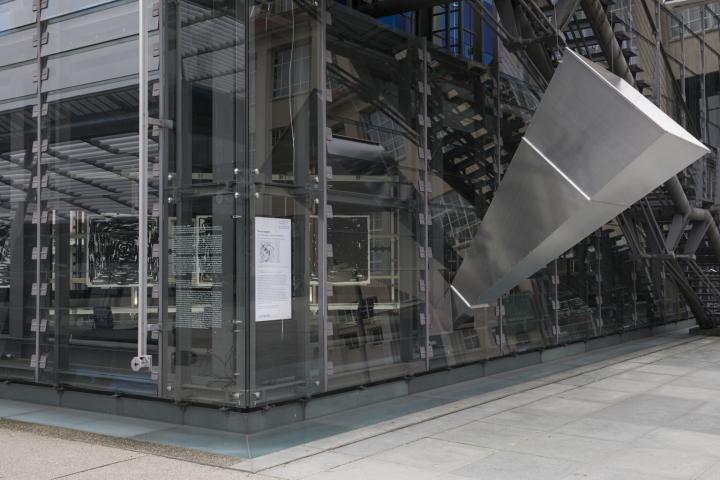Simon Ingram
Radio Painting Station: Looking for the Waterhole
2017

- Artist / Artist group
- Simon Ingram
- Title
- Radio Painting Station: Looking for the Waterhole
- Year
- 2017
- Category
- painting, computer-generated, installation
- Material / Technique
- 4 paintings generated by a computer-machine assemblage; oil on linen canvas; technique manufacturing process: custom built X/Y axis painting assemblage controlling paint brush with 2 degrees of freedom; Computer: Compaq desktop PC, operating system: Windows 7 (32 bit), programming language: custom-made software PaintACell (C#, Lisp like code), proprietary software Radio Astronomy Supplies SpectraCyber (C); other technical elements: horn antenna, SpectraCyber 1420 MHz/21 cm frequency receiver
- Dimensions / Duration
- 4 paintings je 155 x 155 x 2,5 cm, antena 430 x 189 x 145 cm, installation dimensions variable
- Collection
- ZKM | Center for Art and Media Karlsruhe
- Description
The Installation »Radio Painting Station: Looking for the Waterhole« by New Zealand artist Simon Ingram involves the materialization of invisible cosmic energy: "I wanted to reposition the theme of expressing higher powers or unseen forces by using technical methods to paint invisible cosmic radio energy." [1]
The result of Ingram’s study is four square canvases displaying concentric shapes, in the form of black circles and squares. »Radio Painting Station: Looking for the Waterhole« visualizes a part of the cosmic radiation above Karlsruhe. Observations focus on the hydrogen line – designating, in astronomy, the radio emissions of neutral hydrogen. Such radiation can provide information about the density distribution, velocity, and temperature of hydrogen atoms in the universe. The term »water hole« is used in the context of the search for intelligent extraterrestrial life – SETI (Search for Extraterrestrial Intelligence) – to denote the frequency range that is most likely to make life feasible.
In December 2017 Ingram mounted a 4.5 meter long horn antenna on the ZKM | Karlsruhe’s Kubus to receive information from space, which the painting robots could translate into paintings. It received and logged energy on the 1420-megahertz frequency. The signals recorded were fed via a cable to the computer in the Kubus. Software transformed the data into motion commands that controlled four brushes, from immersion in the paint pots to movement across the canvas. The paintings are a documentation of cosmic energy.
[1] Gow Langsford Gallery, »Simon Ingram at ZKM, Germany,« gowlangsfordgallery.co.nz (December 21, 2017). https://www.gowlangsfordgallery.co.nz/artists/simon-ingram/news.


